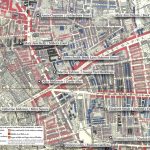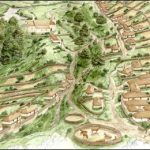
Response: Charles Booth
During the last few decades of the 19th century, the East End of London became “ground zero” for social reformers. With its high density of working poor citizens, advocates of change published many reports using East End slums as their…

Response: George Bernard Shaw
Alright, so I’ve taken a relatively long detour but I hope my past research regarding the relationship between enclosure and urbanization establishes some common ground for thinking about the state of the East End slums. As I prepare to move…

Whitechapel, London
In the past few weeks, I have tracked the development of English land policy from the time of the Anglo-Saxons to the 19th century. Now that I’ve spent some time investigating agricultural planning before parliamentary enclosure, I’m going to resume…

Open-Field System and Nuclear Villages
My last several blog posts have dealt with enclosure, so I wanted to continue my research into English land policy. This week, I investigated beyond the Tudor dynasty and hope to synthesize information about medieval land planning. My research leads…

Tudor Enclosure Movement
After last week’s blog post on enclosure, I felt the need to go back further in time to understand the importance of enclosure in English land policy. I previously mentioned that enclosure first became prevalent during the Tudor dynasty, but…

Queen Boudica’s Sack of Londinium
After Queen Boudica sacked Londinium in 61 AD, it was rebuilt as a Roman-planned town to consolidate control over the region. Queen Boudica’s vicious sack of Londinium revealed how poorly planned the port city originally was. Queen Boudica was married…

19th Century Enclosure Movement
The “enclosure movement” in the 19th century encouraged a large demographic migration of people from the English countryside to city centers, speeding up urbanization. Enclosure is the process of converting land from public ownership to private ownership through capital acquisition….

Recent Comments